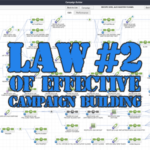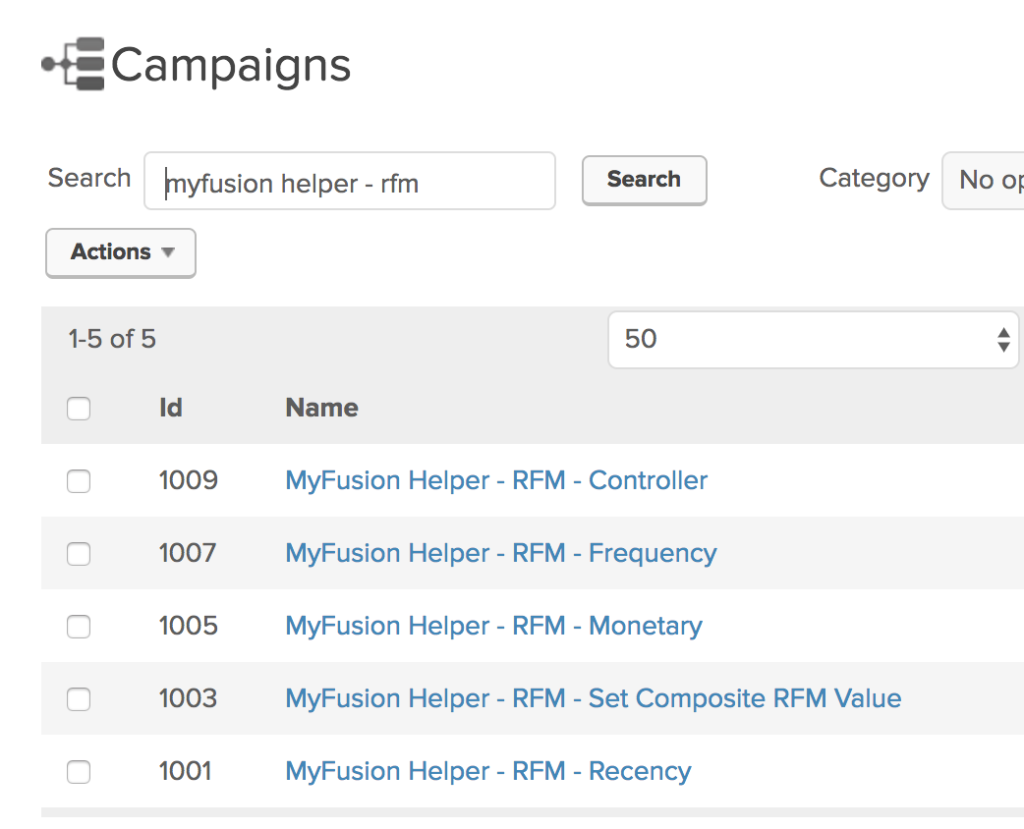Law #2 of Effective Campaign Building

Killing Off The Frankenfunnel: Part 2
So we spent a lot of time in Law #1 focusing on one aspect of the curse of the Frankenfunnel – the general lack of flow with consistent start and stop goals. In this second Law of Effective Campaign Building, we will continue to slay the beast – this time with with the most simply of tools; brevity.
Law #2 says that each campaign should serve one and only one logical purpose and should be as small and elegant as possible. This, is completely at odds with the Frankenfunnel's mission of complete and total chaos.
More Is Better
When it comes to creating campaigns, more is better. Most people seem to think that everything has to be done within one physical campaign – it doesn't. Campaigns can easily be related to one another, start and stop one another and be split up. Again, I'm not telling you this is the only way to do it, but it's the way I teach. Creating one big monstrosity of a campaign is very tough to follow, very tough to test and debug, very tough to maintain over time, and, worse yet, very EASY to screw something up.
So the first premise of this Law requires your acceptance that it is “ok” to have multiple campaigns.
Logical vs. Physical
I use the word campaign very loosely. To me a campaign is a “logical” construct; meaning that it describes the marketing process in general. My RFM campaign, for example, is actually a series of several physical campaigns inside of Infusionsoft. I feel that this is the easiest and most logical way of laying out campaigns. Break down the core logical campaign into one or more physical campaigns that are each very concise, simple and achieve one specific purpose. Let me give you an example to illustrate this point, my RFM campaigns:
Notice how my logical RFM campaign is really broken into five separate campaigns. Also notice how it make sense – each has one very specific purpose. The Controller is designed to control the flow of the contact throughout the process of setting the RFM values. A contact flows through the controller and is then pushed into the other campaigns as necessary. All of the other campaigns likewise each have just one purpose.
- MyFusion Helper – RFM – Frequency -> as the name implies, this campaign does the calculations necessary to determine the frequency value
- MyFusion Helper – RFM – Monetary -> as the name implies, this campaign does the calculations necessary to determine the monetary value
- MyFusion Helper – RFM – Set Composite RFM Value -> as the name implies, this campaign does the calculations necessary to set the 3-digit RFM score
- MyFusion Helper – RFM – Recency -> as the name implies, this campaign does the calculations necessary to determine the recency value
Now I could have combined all of those into one great big campaign, but let me tell you, it would have been a beast, a monster – a Frankenfunnel. Instead, we have a very clean and simple structure of multiple related campaigns that invoke each other as necessary. It's clean, elegant and minimal. It is easy to follow and best of all, it's easy to maintain. This is the core lesson behind today's Second Law of Effective Campaign Building.
Breaking Them Up…
So one of the things that people generally struggle with when embarking on this path is “how do I break up my campaigns?”. Actually this is pretty easy. Just remember the fact that a campaign should only serve to solve ONE (and only one) problem. If you do that, the divisions of the big logical campaign into the various, smaller physical campaigns will be pretty straightforward.
In the example above, I had four difference calculations to make – recency, frequency, monetary and the RFM score. I also needed a campaign to push contacts through those other four. So creating five physical campaigns just made sense. If you break out your logical campaign into it's various purposes and goals, you'll easily be able to separate it out as well.
Let's take a common example – a webinar campaign. There are several elements of a typical webinar campaign:
- Registration
- Attendance
- Replay logic
- Downsell or payment plan
Now this is a pretty basic webinar; there's lots more we could go into, but let's keep this simple. Can you see how this could very easily be broken down into these four separate campaigns each with their own specific goal?
Simplistic Elegance… Yields Sophistication
One last reason to embrace this methodology. You may be thinking that this will create a lot of small campaigns, and you'd be right, it will. But the beauty of this is not just on day one when your campaign is pristine and simple.
Over time, if your campaign is performing well, you'll likely make many, many revisions to it. With this structure in place from the beginning, as you add more revisions and sophistication into your campaign with split testing and other more robust complexities, your campaign will still remain manageable.
Enjoy! And make sure to let me know what you think – just leave a comment below!

